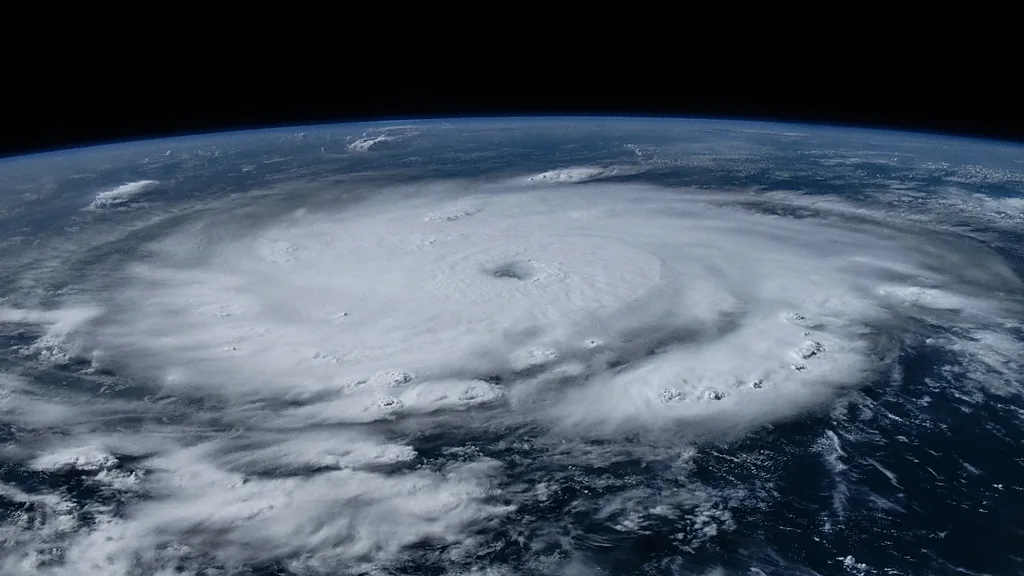The most potent storms in the globe are changing in behavior. We must understand how hurricanes, typhoons, and tropical cyclones are evolving if we are to prepare for increasingly severe storms. Typhoons, tropical cyclones, and hurricanes are commonly referred to as nature’s steam engines because of the heat they generate from the ocean. As they barrel across the oceans, they transmute its heat into devastating kinetic energy that flattens islands and inundates coastal cities, necessitating months of urgent restoration work to mend. These “engines” are responding to the record-breaking ocean temperatures by slowing down, changing their course, and becoming less predictable and more hazardous.
In an attempt to figure out how to adapt, scientists are currently racing to figure out exactly how hurricanes are rewriting the norms and patterns we have observed in the past.
An extended season
Hurricane activity in the Atlantic follows a clear seasonal pattern, peaking in September and occurring very rarely or not at all in the winter. As a result of climate change, a robust and early hurricane season is to be expected, according to James Kossin, a retired US National Oceanic and Atmospheric Administration (Noaa) climate and atmospheric scientist.
According to Kossin, hurricanes “simply respond to the environment that they are sitting in.” “Therefore, the hurricanes will act as though it is August or September if the environment in June is made to resemble the environment that would typically be in those months. They are without a calendar. Climate warming is the primary cause of the abnormally warm ocean conditions we are currently seeing, but other factors, like the current El Nino to La Nina transition, which tends to increase storm activity, have also contributed to this season’s activity.
“We would expect the waters to be at the warmth that we need for hurricane sooner in the year in a warming climate,” says Kristen Corbosiero, an associate professor at the University at Albany in New York, who specializes in atmospheric and environmental sciences. Therefore, it is plausible that in the future, hurricane seasons will be longer and earlier.
It is too early to see a regular shift in the season, even though the extreme early start to the 2024 season brought on by Hurricane Beryl is consistent with what climate scientists could anticipate to see with climate change. According to Columbia University ocean and climate physics professor Suzana Camargo, “[It’s] not something that appears clearly in the data yet.”
‘Shear is death’
Hugh Willoughby, a research professor of earth and environment at Florida International University, believes that one of the greatest storms to form recently in the Atlantic did so in circumstances that should have precluded a hurricane from forming. During the height of the Atlantic season in September 2023, Hurricane Lee quickly strengthened into a category five hurricane. El Niño, which typically stifles storms in the Atlantic due to greater wind shear and atmospheric stability, was in effect at the time.
Willoughby states, “Shear is death for hurricanes.” High wind shear disrupts a hurricane’s structure. Vertical wind shear is the variation in wind direction and speed at various heights. Willoughby explains, “Imagine you had a turbine engine; shear wipes out part of the blades.” It was therefore “a terrible surprise” that a category five hurricane like Hurricane Lee formed despite significant shear. Willoughby speculates that the unusually warm water in September 2023 may have, for reasons that are now unclear, outweighed the impact of shear.
“We, the theoreticians, need to think about that.”
Increased intensity more quickly According to Willoughby, the great majority of hurricanes that begin in the Atlantic never achieve their full capacity. Within the narrow confines of the Atlantic Basin, storms frequently make landfall before reaching their maximum intensity or encounter strong wind shear, which aids in the storm’s dissipation. “If all goes according to plan, though, it will intensify quickly and achieve its maximum potential intensity, which is determined by the temperature of the ocean surface beneath the cyclone,” Willoughby adds.
According to Kossin, there is “a heck of a lot of evidence” that intensification rates are rising as ocean temperatures rise, giving storms more fuel.
“Everything depends on the quantity of fuel that is available,” he states. It is similar to altering a carburettor’s jets. You change the jets to allow for more fuel to come in and mix with the air, you’re going to get more horsepower. It will be possible for you to reach 60 more quickly from zero. And you are intensifying with that.”
Stronger peak intensity
Along with climate change, hurricanes’ peak intensities have also increased. According to a 2020 study by Kossin, storm strength increased by roughly 6% every ten years between 1979 and 2017. The likelihood of a storm reaching the speed of 111 mph (180 km/h) needed to be designated as a major hurricane has increased by 25% in the last 40 years. Overall, the International Panel on Climate Change (IPCC) predicts that the percentage of tropical storms that are category three or above is probably rising.
“The ocean temperature defines the maximum intensity the hurricane can reach,” says Willoughby.
Slowing down
Hurricanes are moving slower along their courses across land and ocean, even if the wind speeds inside them are increasing. According to a 2018 study by Kossin, since the turn of the 20th century, hurricanes that hit the US have slowed down by about 17%. In the western North Pacific, tropical cyclone speed decreased by up to 20%. The uneven global warming caused by climate change, with the Arctic rising about four times faster than the rest of the planet, is assumed to be the cause of the slowdown. Consequently, the temperature differential between the tropics and the Arctic is decreasing. According to Kossin, “the temperature gradient is what propels the winds.” “The gradient’s strength increases with the wind.
He suggests comparing hurricanes to a cork in a stream. “They just follow the wind wherever it leads them.” Furthermore, if you reduce wind speed, storms will also decrease in speed as they travel.
Hurricanes are changing track
With the focus on strength and intensity, Kossin warns against developing tunnel vision while examining the ways hurricanes are evolving. “People do not talk about track enough,” according to him. “And I consider it to be far more dangerous.”
The migration of tropical cyclones in the Western Pacific, where Kossin has measured a slight decrease in risk around the Philippines but an increase to the north near Japan, is one reason why communities may be exposed to extreme storms in previously unaffected regions. Kossin and colleagues found in a 2014 paper that storms had moved north by 53 km (33 miles) per decade in the northern hemisphere and south by 62 km (39 miles) per decade in the southern hemisphere. Overall, the hurricanes were moving about one degree of latitude away from the tropics per decade.
Given how regularly they occur there, the Philippines is comparatively acclimated to [cyclones]. Though not often, Kossin clarifies that they do happen in Japan. That affects risk in a pretty big way.”









